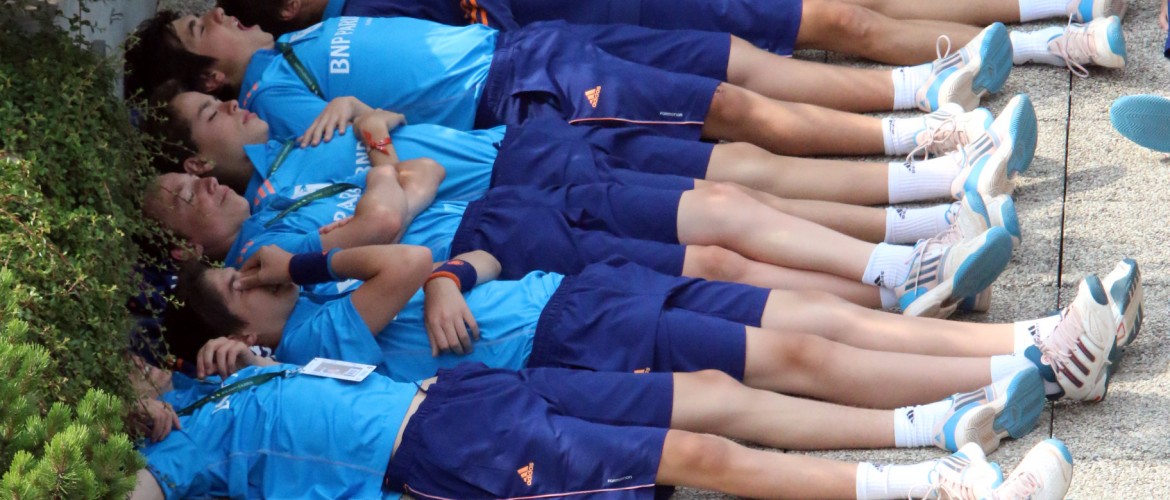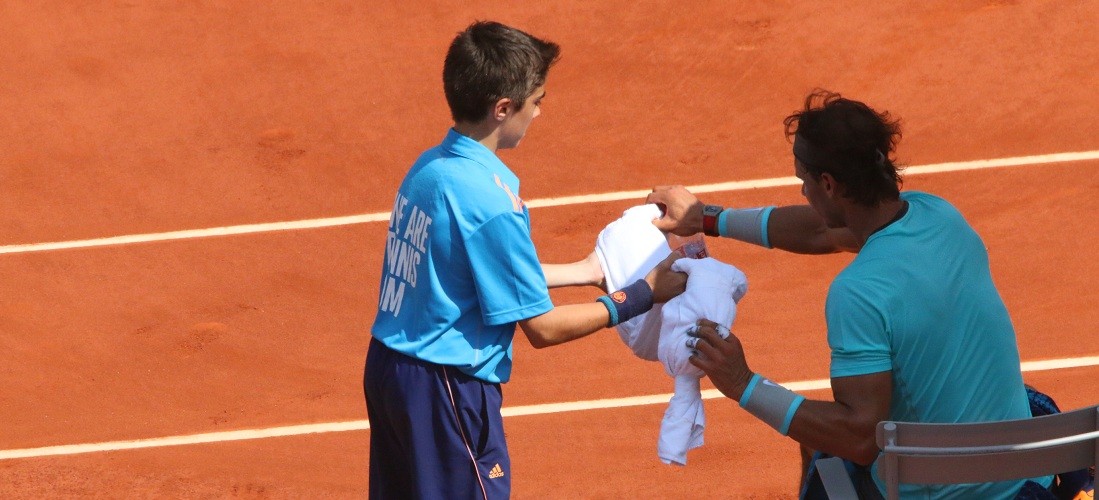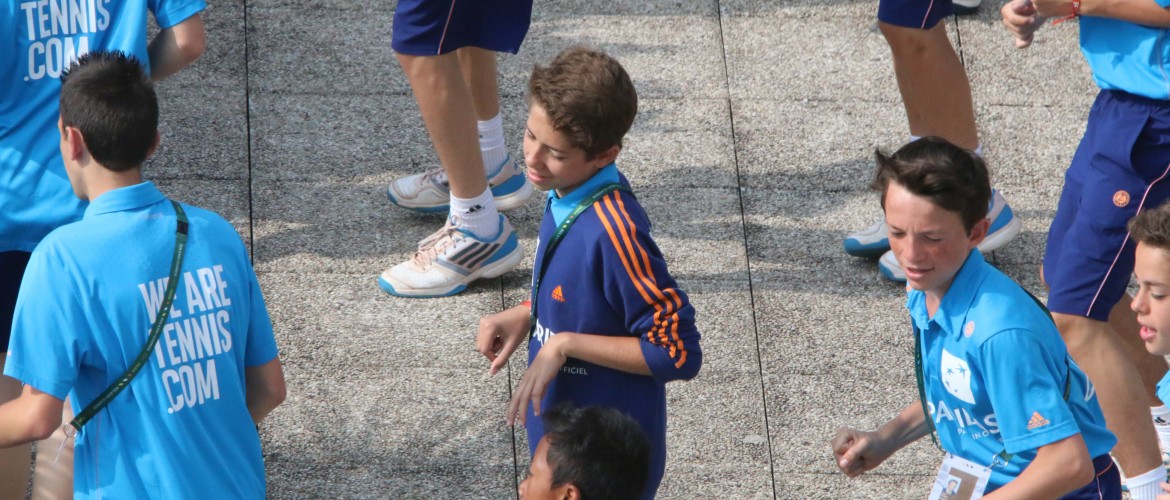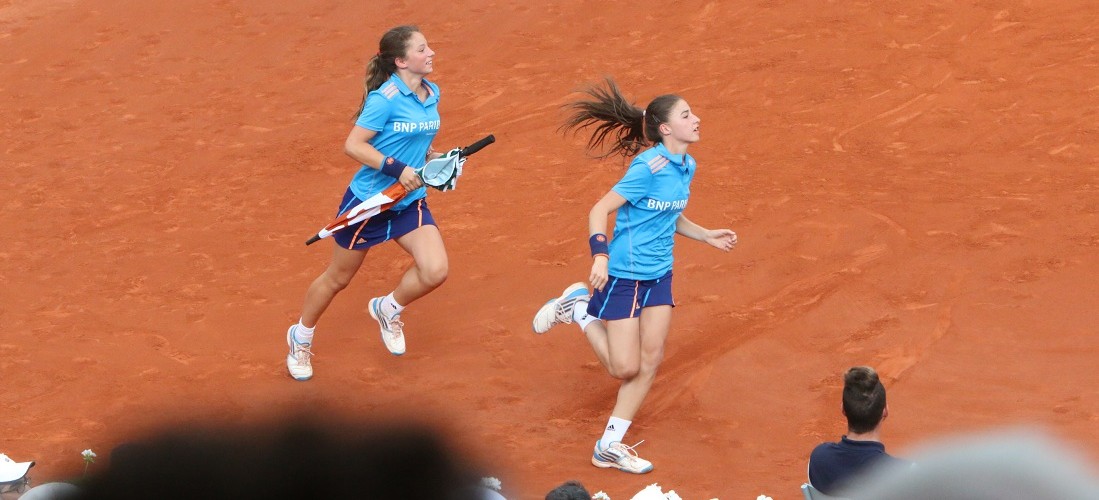Living the Life: French Open Ball Kids
By JOHN MARTIN
PARIS — Spectators arriving early at Roland Garros encounter an unusual sight each morning: more than 200 children singing and chanting as they run down a wide walkway that leads past the empty stadium of Philippe Chatrier Court.
They are the ballos, or ball kids, heading down Roland Garros’s equivalent of Broadway. Their destination is Suzanne Lenglen Court, 100 yards away.
Like a military unit on a morning jaunt, they surge up Lenglen’s steps and swarm in loose ranks around its exterior — twice.
There is nothing nonchalant about the French Open’s youngest employees.
David Portier, 34, their leader, said the morning singing was “for the positive vibe it transmits to the people, a welcome in the stadium, a good feeling in the morning.”
The 250 youths follow a robust ritual that began to take form more than 40 years ago. In a 2009 interview, Ridha Bensalha, a Tunisian-born tennis professional, said he created the first modern organization to train ball kids at Roland Garros in 1973.
Bensalha had a reputation for toughness.
“Hard? I’m hard,” he said. “The ball kids like this. You know, they do it because I must be hard with them. But I am not hard like the military. I enjoy being with them.”
Bensalha was succeeded in 2010 by Portier, his assistant, amid concerns that Bensalha was too tough on his charges, which he denied.
Today’s conditioning is aimed at building physical balance, Portier said. “You have to wake up your body on the morning,” he said. None of the three other major international championships devote as much attention to conditioning.
Over the years, Bensalha staged training clinics as far away as Key Biscayne, Fla., and Montreal. Next year, Portier said, he will help advise trainers of ball kids at the Australian Open. Six Chinese children qualified for this year’s contingent at Roland Garros.
Two Italian administrators are studying with Portier to prepare for next year’s Italian Open.
One morning early this week, the ball kids began by stretching, running, hopping from foot to foot, skipping sideways and practicing the motion of rolling the ball.
“We do this,” said Romane Lecureux, 14, of Amiens, France, “because it means we are warm when we go the court.” Without their workout, said Álvaro González Rico, 13, a Madrid-born Paris resident, “we might hurt our muscle.”
As a final exercise, they lay prone together in neat rows on a sidewalk and an asphalt walkway, keeping their eyes closed for nearly five minutes.
“Just five minutes for concentration, to think about what you want before starting a very hard day,” Portier said.
Bensalha’s ball kids shook off their sleep and strengthened their esprit, he said, by singing, “We are the ball kids; we are the best in the world.”
“No, it’s not like that,” Portier said, chuckling. Now, he said, they sing, “ ‘We are the best of this year,’ because 3,000 kids want to be ball kids at the French Open, and now 250 are the best of this year.”
Nevertheless, Bensalha’s ideas still seem at work on match courts.
“You must understand all that the player needs in the court — water, towels,” he said in 2009. “If Federer needs this ball, you give him this ball. If Nadal needs this ball, you give him this ball. We work very hard about this.”
Delivering balls to each court in a cloth barrel worn as a backpack, rolling balls rapidly to the server’s end of the court, repeatedly running forward with towels for even the least-known players, the ball kids embrace a tradition that Roland Garros calls its own.



